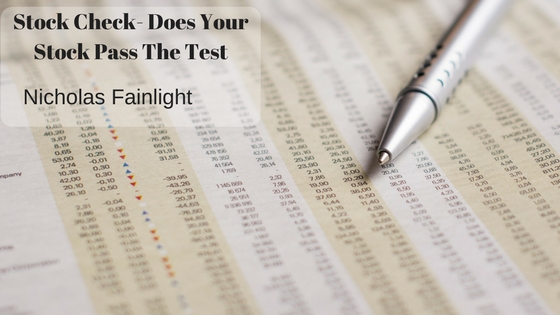When it comes to investing in stocks, there are many factors to consider. First, you have to be aware that this is your money that you are investing so this is a leap of faith that can either reap great benefits or be a grave mistake. You also want to take into consideration the fact that you are competing with professional traders and institutional investors who have strong experience and various ways of analyzing stocks. Luckily, there are ways for you to also make a simple analysis to make sure you are making a smart investment.
Looking at the Growth of Revenues and Profits
These are some important fundamentals to begin with. You want to look at the trends of revenue and profit for the stock you are investing in. One source for this information can be your brokerage, as well as many of the free investment websites around the web. You will want to look at both annual and quarterly histories and you want look for both the revenues and profits over periods of time as well as any trends of growth. Don’t get initially discouraged if you see one bad year or bad quarter. However, if you see a more recent negative trend, then you might want to reconsider this investment.
Ratios
Now that it has passed the revenues and profits test, you want to look to the ratios. There are three noteworthy and easy to use ratios to consider which are the price/earning ratio, the “acid test”, and the book value by share. Starting with the price/earnings ratio or PE ratio, this will tell you how the share price relates to the company’s profits. The PE ratio also can vary by sector however, if one company is a ar outlier from its industry peers, then that can be a sign of an upcoming price swing. Next, we have the “acid test.” Also known as the quick ratio, this is a measure of liquidity so it divides current assets by current liabilities to better understand the company’s ability to pay its bills. Finally, there is the book by value share ratio. Warren Buffett championed this an an important factor because it shows the value of assets on the books after taking out liabilities.
Bollinger Bands
Having looked at the fundamental analyses with revenues and profits and ratios, you also want to consider the technical indicators. One great technical indicator is the Bollinger Bands which was named after analyst, John Bollinger. This looks at three key technical indicators which are, the moving average and upper and lower bands based on statistical analysis of recent results. So in the end it will show you the likely upper and lower price points with an average in the middle. The general rule of thumb is that you want to avoid buying if the current price is above the upper band and seek to buy if it is below the lower band.
